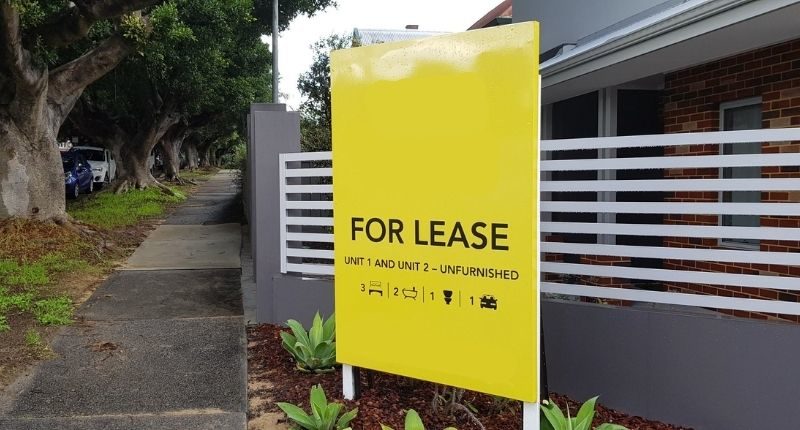- Renting a house in Australia did not become more expensive in the latest quarter
- Units saw smaller price increases
- The regions saw mixed results
A glimmer of hope for renters seems nigh as rental rates reverse their rampant rise.
Data from PropTrack, and CoreLogic both show that while annual rental prices have increased some 10% year on year, the December quarter saw a welcome rise of only 1% (PropTrack) or 2% (CoreLogic).
Rental prices for houses in the capital cities saw prices stall, with PropTrack data showing the segment had no quarterly price movements at all.
The PropTrack report author Cameron Kusher, PropTrack director for economic research, wrote:
“The moderation in rental price growth will be something to watch over the coming year. Demand for rental stock remains heightened and supply continues to be limited, however rental vacancy rates have steadied over recent months.”
Cameron Kusher, PropTrack director economic research
CoreLogic’s head of research and author of CoreLogic’s report, Eliza Owen, said December marked the second consecutive quarter that the pace of growth slowed, and coincided with a small lift in the rental vacancy rate to 1.17% in December, up from a recent low of 1.05% in the previous month.
“The decline in quarterly rental growth rates observed in the December quarter was led by the capital cities where rents continued to increase but at a slightly slower rate than they have done in September and June quarters,” she said.
“While a slowdown in the pace of rent rises could be a sign that the rental market is starting to shift, it’s not great news for tenants just yet. Rents are still rising in most capital cities and regional areas with vacancy rates low.”
Owen also noted that it was difficult to pinpoint what was happening in the rental sector:
“It is not entirely clear whether the rental market will continue inching toward a turning point, or if this is a temporary, seasonal reprieve due to higher new listings through December.”
Eliza Owen, CoreLogic head of research
“New advertised rent listings saw a seasonal peak in the four weeks to December 11th. Through this period, 50,867 new advertised rental listings were counted by CoreLogic, which is the highest volume observed since mid-February, another seasonal high point.
“However, it’s important to recognise despite the increase in rental listings, the figures remain – 13.8% lower than the previous five-year average for this time of year.”
Regional rents also stagnate
PropTrack’s data showed the quarterly change for rental prices in the regions was 0%, with median rent around $450; $470 for houses and $400 for units. The yearly change was 7.1%.
CoreLogic’s data showed the combined regions recorded a 1.3% quarterly rise, with median rent at $500. The report also noted that this rate of growth is unchanged from the previous quarter, “… though there were some mixed outcomes in rental performance below this headline figure.”
Vacancy rates for all dwellings in the combined regions is currently 1.2%, according to CoreLogic, with the vacancy rate in the regions 1.3% 12 months ago.
Canberra maintains “most expensive place to rent” title
Median weekly rentals in the nation’s capital, according to CoreLogic, is $681, just $2 ahead of nearby Sydney at $679 per week, and Darwin at third place with median rentals coming in at $594 per week.
The report from CoreLogic also noted Darwin experienced a rapid deceleration in rental value growth, with the latest quarterly increase only 0.3%, compared to the June quarter increase of 3.6%.
Median weekly rental data
| PropTrack | CoreLogic | |
| Sydney | $630 | $679 |
| Melbourne | $460 | $507 |
| Brisbane | $530 | $588 |
| Adelaide | $480 | $518 |
| Perth | $480 | $553 |
| Hobart | $540 | $552 |
| Darwin | $600 | $594 |
| Canberra | $670 | $681 |
Source: PropTrack Market Insight 11 January 2023, CoreLogic Quarterly Rental Review January 2023.
Perth, Hobart, and Adelaide seem to be the best places to rent, the three state capitals recording the lower rental rates across the nation.
Market uncertainty for 2023
The rental market outlook is mixed for 2023, Ms Owen said with an increase in demand from international visitors during a time of weak confidence among property investors.
“On the one hand, returning overseas migration is likely to place continued demand on rental markets popular with overseas arrivals. Historic migration data suggests this would be Inner Melbourne, the South East of Melbourne, the West suburbs of Melbourne and Sydney’s Inner South West,” she said.
“On the flip side investor activity, and therefore rental supply, is not expected to pick up
substantially in the year ahead. Even though rent yields are rising, investors are facing higher interest costs, and reduced capital growth prospects.”
A seasonal uplift in new advertised listings is expected in the first quarter of 2023, which Ms Owen said is likely to provide more choice for renters and demand-driven shifts such as more share housing, and internal migration to more affordable markets, may also help to ease rental conditions.








